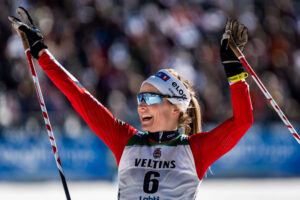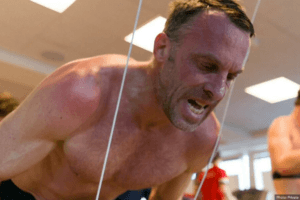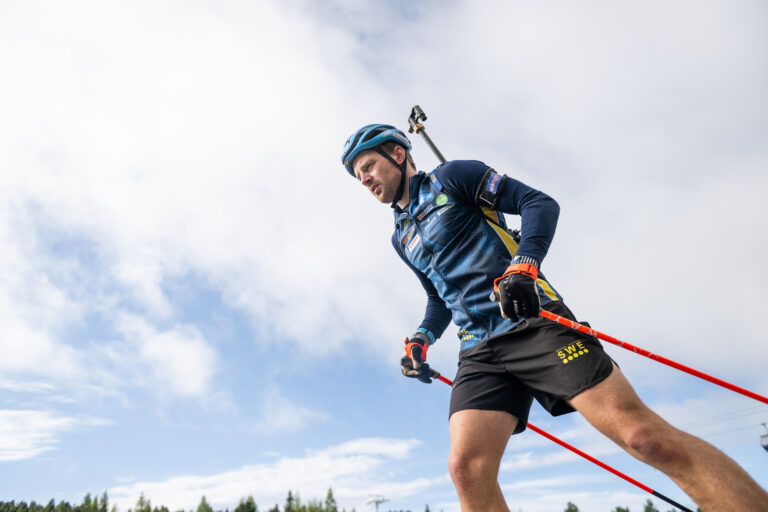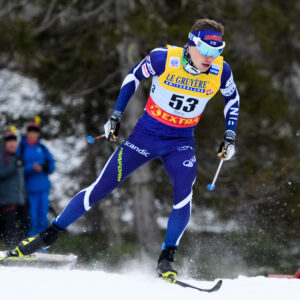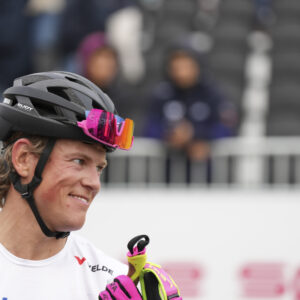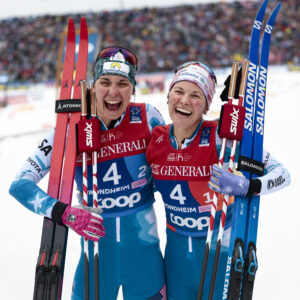Fastest woman in Vasatrippeln – despite broken wrist
Last weekend, Maja Stefansson ran Ultravasan and thereby became the fastest woman in this year’s Vasatrippeln. But her preparation was far from ideal.
To complete a Vasatrippeln, one must finish Vasaloppet, Cykelvasan, and Ultravasan in the same year. One athlete who took on the challenge was skier Maja Stefansson, who last season raced Ski Classics for Team Futura Trentino GTE Elettrica.
Last winter, the 25-year-old finished 38th at Vasaloppet, and almost two weeks ago she completed Cykelvasan. Last weekend, Maja took on Ultravasan, a running race of just over 90 kilometers. When Stefansson crossed the finish line in Mora on Saturday, she did so as the fastest woman in this year’s Vasatrippeln.
Also Read: SEK 289 million for the Vasaloppet municipalities after Winter Week
Likes training with goals
Maja Stefansson has not competed in skiing for very long, and it all started when she did her first Vasaloppet a few years ago.
“I’ve always been someone who likes to train towards different goals. That’s really how I got into skiing and why I now pursue it seriously – because I wanted to ski Vasaloppet,” she told Langd.se, and continued:
“But once you’ve done Vasaloppet, you want to find the next goal, and that became the Vasatrippeln. So, it’s partly about having different goals, but also about training in a varied way. Not just focusing on one sport, but combining skiing, cycling, and running.”
“You don’t run with your arm”
But Maja did not have the best preparation ahead of the final Ultravasan. A few days after Cykelvasan, she went go-karting. The result was a broken wrist, which meant she had to run with a cast.
“I thought you don’t run with your arm. In the best of worlds, of course, I would have had better preparation. But in a way, it gave me perspective and lowered the demands I placed on myself.”
And Ultravasan proved a real ordeal, especially since Maja had never run that far before.
“I had never run that distance before, so I didn’t really know what I was capable of. Because of the crash, it became an extra obstacle just to see if I could make it.”
Unlike skiing and cycling, running allows no breaks.
“If you stop running, you’re just standing still. If Vasaloppet is long, Ultravasan feels even longer – even though the distance is the same. You have so much time to feel and think about different things. At one moment, you’re digging deep, thinking this will never work. Then you get that runner’s high, feeling like you can run forever. That’s part of the charm of long races.”
“Emptiness”
Her finishing time in Ultravasan was 09:04:31, and her total time in the Vasatrippeln ended up at 17:32:09 – the fastest among all women.
“I tried to enjoy it, but it wasn’t that easy,” she said.
How does it feel to have achieved this goal you’ve been training towards for so long?
“Of course, it feels good. But there’s also an emptiness. You’ve had this goal for such a long time, looked forward to it, and trained for it. Still, it’s fun with these kinds of races where you get to test your limits a bit,” she concluded.
Are you interested in long-distance skiing? Click HERE and read more about it.


